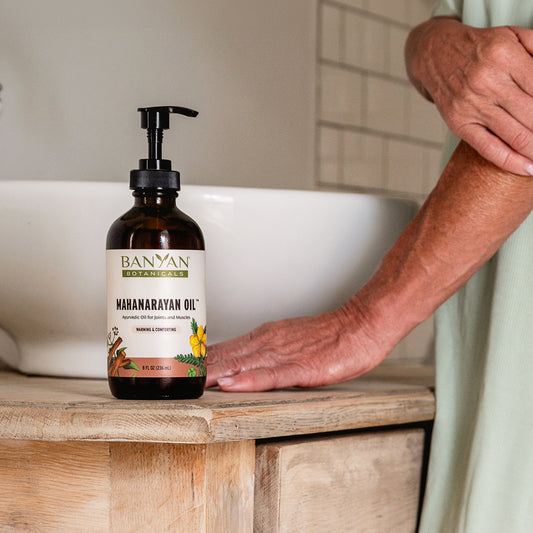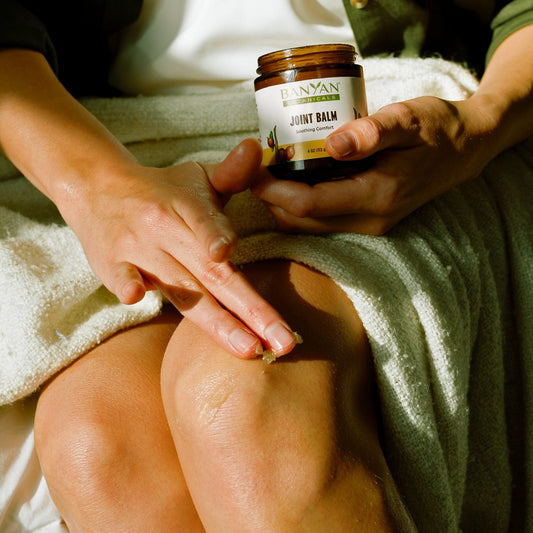In our culture, we're often told “the bigger, the better,” and many people hold this perspective in relation to muscle mass. On the opposite end of the spectrum, we also hear, “less is more,” which is often the belief when it comes to body weight.
Ayurveda has seven tissue systems, and keeping them healthy is critical to our well-being. Vibrant tissues provide us with greater vitality and immunity. The dhatus are sequential in their function—they nourish one another. We can think of them as a series of dominos; what happens to one impacts the rest of the group. If one is weak, it can cause a chain reaction for every layer of tissues to become unstable.
To keep the tissue systems well-functioning, we must initially ensure that the three
If you can pinpoint which dosha has gone into a dhatu, then you can balance it through diet, herbs, and lifestyle regimens suited for that particular dosha.
One tissue system that we are all familiar with is
Healthy mamsa dhatu presents itself as well-formed cheeks, arms, chest, calf muscles, buttocks, and so forth. The person with qualitatively strong mamsa dhatu will exude energy and confidence. They will often be athletic and determined. Muscle comprises approximately half of our body weight. It should come as no surprise that kapha dosha builds the mamsa dhatu in our bodies.
But pumping too much iron or using artificial means to build muscle mass is hard on the body. Certain body parts, especially the biceps, can grow much larger than normal. Then the muscles become more rigid and it's difficult for nutrients to pass through, which can lead to muscle tumors, swelling, arthritis, and possibly hernias.
On the opposite end of the spectrum, muscles can become weak due to lack of proper use. This leads to muscle wasting or atrophy where no musculature appears well formed. Fatigue sets in quite easily. This creates an aura of physical weakness and advanced aging upon looking at such an individual.
Here are some tips for qualitatively healthy mamsa dhatu:
- Avoid a sedentary lifestyle. Exercise at least 30 minutes daily and vary your routine.
- Practice stretching before exercising to avoid tight muscles.
- Do not lift weights for more than 30 minutes a day and avoid lifting more than your physical capacity naturally allows.
- For rigid muscles, do
- For muscle atrophy, eat a vata pacifying diet until you stabilize.

Once the muscles are healthy, the person is prepared to take on new challenges. Physiologically, the body works on the development of the adipose or fat tissue (
This fat tissue resides in our bodies in the form of lipids, cholesterol, and fatty tissue. We shudder at the thought of being fat. However, think of what would happen if there were no fat on the body? We'd literally be all skin and bones. Yet, when there's too much fat in the body, it manifests as lipomas or high cholesterol or even obesity. Consequently, it leads to diabetes and hypothyroid disease.
One natural method to check your cholesterol levels is to examine your earlobes. If there are marked creases in the middle, that generally indicates that your cholesterol is elevated. A yellow ring around your eyeball is also a sign of raised cholesterol.
It might seem like we could just do without fat in our lives. However, fat cells help maintain the structure of cell membranes and also nourish our cells. Thus, the adipose tissue lubricates our bones and joints. If you are noticing a lot of popping and cracking of your joints or experience stiffness throughout your body, that may be a sign of unhealthy fat tissue. It indicates that vata dosha has gone into the tissues.
Here are ways to keep qualitatively healthy levels of meda dhatu:
- Eat levels of fats in moderation. Ghee is actually a “good” fat and provides nutrition and internal lubrication.
- Exercise for at least 30 minutes daily. This can be in the form of gentle walking. Exercise burns the unhealthy fat from the body.
- To help keep the cell membranes well lubricated, practice abhyanga or self-massage. Use the proper oil for your current
- Practice nurturing yourself. Fat provides both fuel and nourishment for the body. Creating an external nourishing environment for yourself will have you feel internally satiated. Then you can eat less and still feel satisfied.
- Work on regulating your
As mentioned earlier, Ayurveda believes in moderation. Use this as a guide post to gently bring yourself back to balance when working on developing quality tissues.













